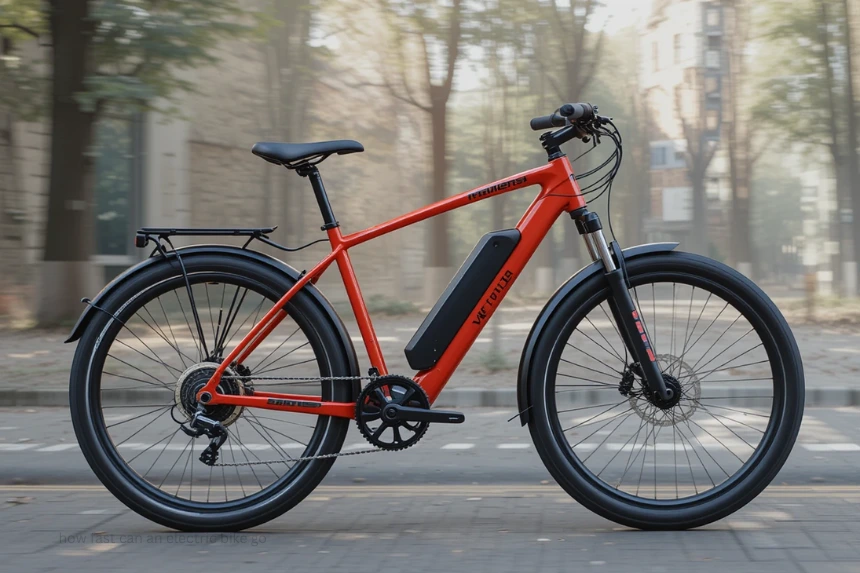Electric bikes, commonly known as e-bikes, have surged in popularity over recent years due to their convenience, eco-friendliness, and innovative technology. One of the most common questions among new and prospective riders is: how fast can an electric bike go? Understanding the speed capabilities of e-bikes, along with the factors influencing their top speeds, is essential for safe riding, legal compliance, and choosing the right model for your needs. This comprehensive guide explores the various aspects influencing the maximum speed of electric bikes and what riders can typically expect.
The Typical Speed Range of Electric Bikes
The potential speed of an electric bike varies significantly depending on the model, motor power, battery capacity, and local regulations. The majority of commercial e-bikes can be divided into two main groups:
Class 1 E-bikes: These are pedal-assist bikes that provide assistance only when pedaling and are limited to 20 mph (32 km/h). They are permissible on most bike paths and roads where bicycles are allowed.
Class 2 E-bikes: Equipped with a throttle, these bikes can also reach 20 mph (32 km/h) without pedaling, but some models can go faster when pedal-assisted or with throttle use.
Class 3 E-bikes: With a top speed of 28 mph (45 km/h), these are referred to as “speed pedal-assist” cycles. They are often restricted to certain areas and may require registration or licensing in some regions.
In addition to these classes, high-performance or custom-built e-bikes can achieve even higher speeds under specific conditions, though these are often not street-legal.
Factors That Influence How Fast an Electric Bike Can Go
Several key elements determine how fast an electric bike can reach and sustain:
1. Motor Power
The motor’s wattage directly impacts speed capabilities. Typical e-bike motors range from 250W to 750W, with higher wattage motors capable of delivering more power and potentially higher top speeds. However, laws in many regions cap motor wattage to regulate speed and ensure safety.
2. Battery Capacity
A larger battery may provide more consistent power output, allowing the motor to maintain higher speeds over longer distances. But the battery capacity primarily affects range rather than top speed directly.
3. Gear Ratios and Drivetrain
The gear system influences how efficiently power is transferred to the wheels, affecting maximum speed, especially hill climbing and acceleration.
4. Weight and Rider Fitness
Vehicle weight, including rider weight, affects acceleration and speed. Lighter bikes and riders tend to reach higher speeds more easily.
5. Riding Conditions
Factors such as terrain, wind resistance, and road surface play a significant role—flat surfaces enable higher speeds than hilly or rough terrain.
6. Legal Restrictions
Most regions impose legal limits on e-bike speeds. Exceeding these speed limits can result in fines or restrictions, and in some cases, such modified bikes may be classified as mopeds or motorcycles.
How Fast Can Various Electric Bike Types Go?
Based on the factors above, here’s a typical breakdown of what to expect from various e-bike classes:
Entry-Level E-bikes: Usually equipped with 250W motors, these e-bikes typically reach top speeds around 20 mph (32 km/h). They are ideal for casual commuting and legal in most areas.
Mid-Range E-bikes: With 500W motors, these bikes can comfortably reach 20-28 mph (32-45 km/h) under pedal assistance, making them suitable for faster commutes and recreational riding.
High-Performance E-bikes: Some high-end models or custom e-bikes equipped with 750W or greater motors can accelerate beyond 30 mph (48 km/h), though they often require special licenses and are restricted from public roads in many locales.
Can You Make Your E-bike Go Faster?
Many riders are curious whether they can modify their e-bikes to achieve higher speeds than legally allowed. While it’s technically possible to enhance motor power, install larger batteries, or remove speed restrictions, it’s essential to consider:
Legal implications: In most regions, exceeding legal speed limits classifies the e-bike as a moped or motorcycle, requiring registration, insurance, and safety gear.
Safety concerns: Higher speeds increase the risk of accidents, especially if the rider lacks proper safety gear or riding experience.
Warranty and safety: Your e-bike’s safety features may be compromised and warranties may be voided if you modify it.
Before trying to change the speed capabilities of your e-bike, make sure you are aware of the laws and regulations in your area.
Safety Tips for Riding High-Speed E-bikes
Wear protective gear: Always use a helmet, gloves, and other protective gear suitable for higher speeds.
Practice safe riding: Start slow, especially if you’re unaccustomed to higher speeds, and ride within your skill level.
Inspect your bike regularly: Ensure brakes, tires, and control systems are in top condition to handle increased speeds safely.
Follow local laws: Abide by speed restrictions and riding rules in your area to avoid fines or accidents.
Final Thoughts: How Fast Can an Electric Bike Go?
In summary, the speed an electric bike can go depends on several factors, including its class, motor wattage, regulatory restrictions, and riding conditions. The peak speeds of most commercially available e-bikes range from 20 mph (32 km/h) to 28 mph (45 km/h). Even though they can travel quicker, high-performance bikes frequently need specialized licenses and are illegal on public roads in many places.
Knowing your local laws, riding environment, and personal safety considerations will help you select the right e-bike and ride confidently within your limits. Whether for commuting, recreation, or exploring new adventures, understanding the speed capability of your e-bike ensures a safer and more enjoyable ride.



